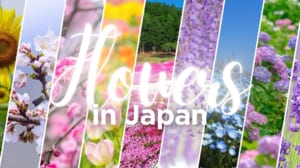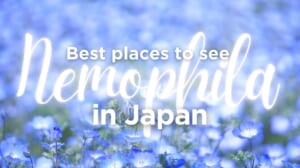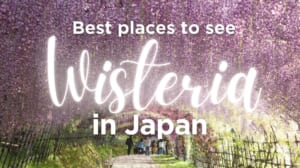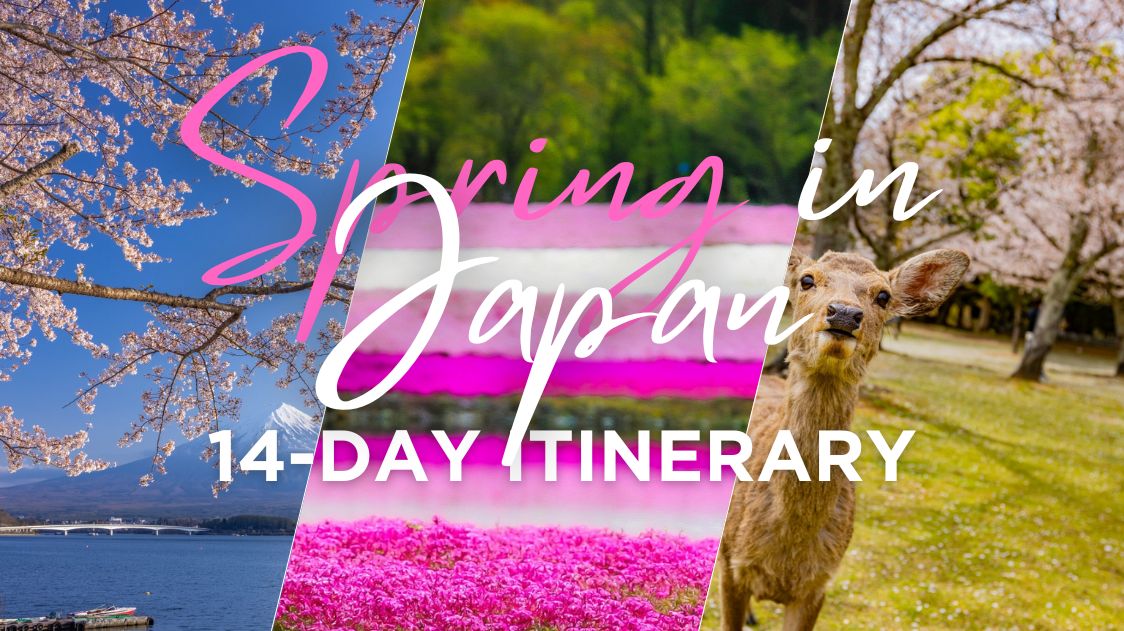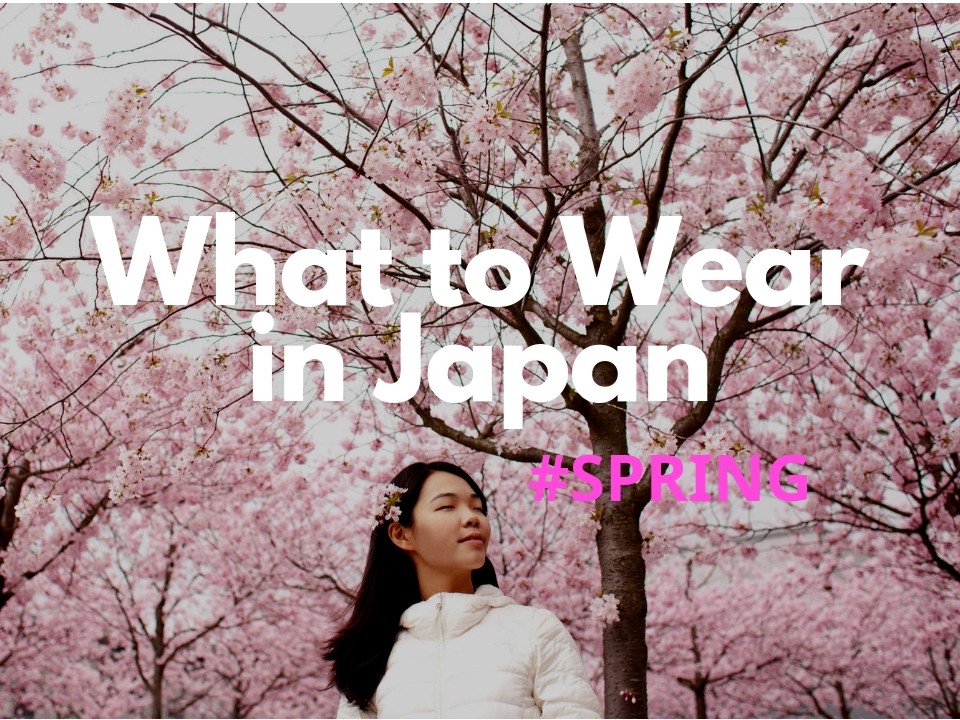Best Flower Parks in Japan
Exploring Japan's Best Flower Parks across seasonal charms

Japan’s affinity for admiring the seasonal changes is vividly captured in its enchanting flower parks, housing the ephemeral beauty of seasonal blooms. Across the country, these parks draw crowds eager to witness the fleeting splendor of cherry blossoms, vibrant tulips, delicate cosmos, and more, each season offering a new spectacle.
Over time, these floral havens have grown in popularity beyond the locals to become must-visit destinations for travelers worldwide, seeking to immerse themselves in their renowned natural beauty and the cultural rituals that celebrate the changing seasons. So here we go with the most impressive flower parks across Japan!
Check also: Best Flower Parks around Tokyo
* Please note that this article contains affiliate links
1. Farm Tomita, Hokkaido
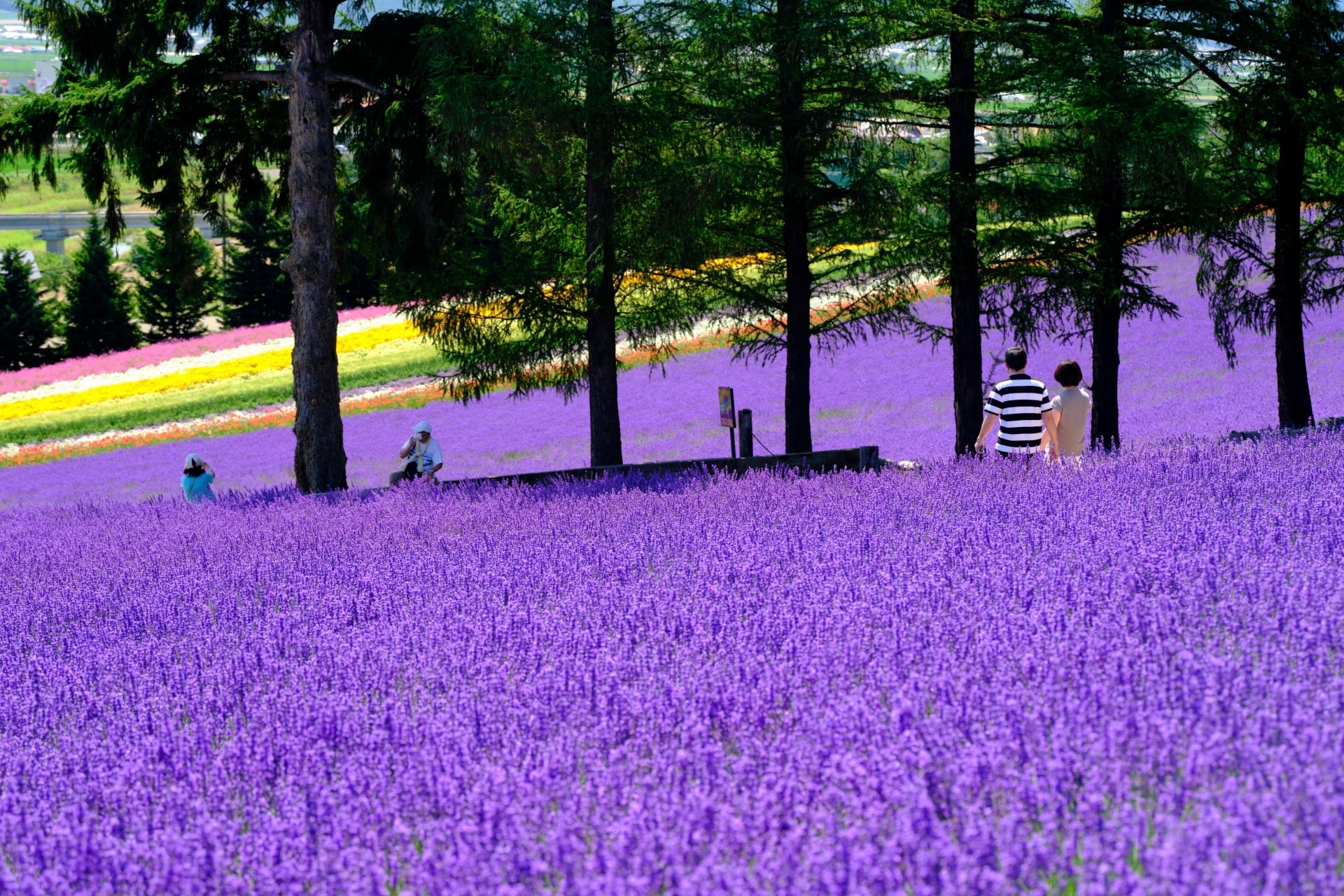
The farm’s dedication to floral diversity is evident in its meticulously maintained fields, including the famous Irodori Field. Visitors can immerse themselves in the fragrant aroma of blooms, explore quaint shops, and savor local treats at onsite cafes.
 Access Access |
5-min walk from Lavender-Farm Station |
|---|---|
 Official Website Official Website |
http://www.farm-tomita.co.jp/ |
2. Shikisai no Oka, Hokkaido
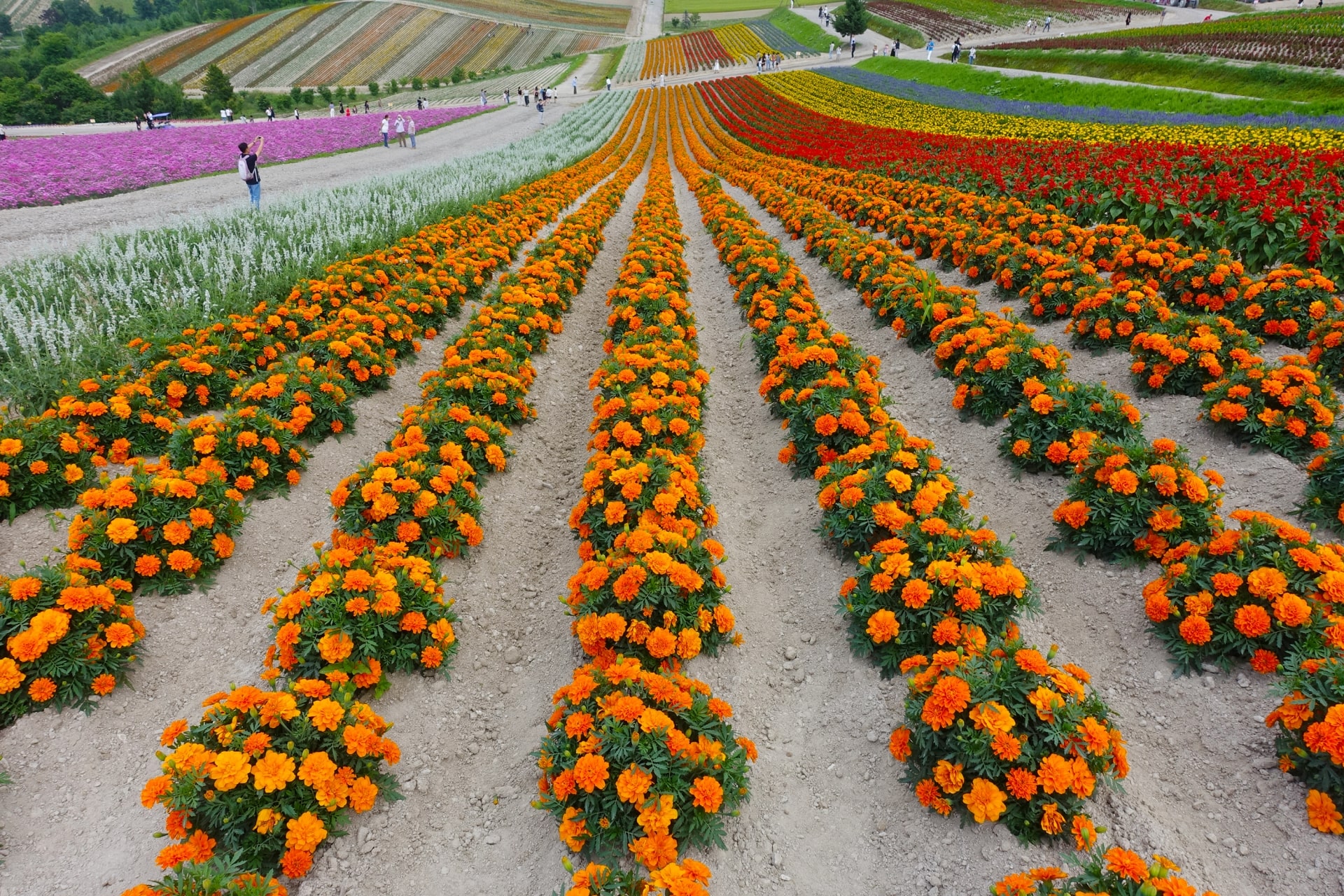
The backdrop of the Daisetsuzan mountain range adds to the dramatic panorama, making for unforgettable views. You can also explore the fields aboard unusual means like tractors or karts, adding an adventurous twist to the floral experience.
 Access Access |
25 mins walk from JR Bibaushi station |
|---|---|
 Official Website Official Website |
http://www.shikisainooka.jp/en/ |
3. Nasu Flower World, Tochigi
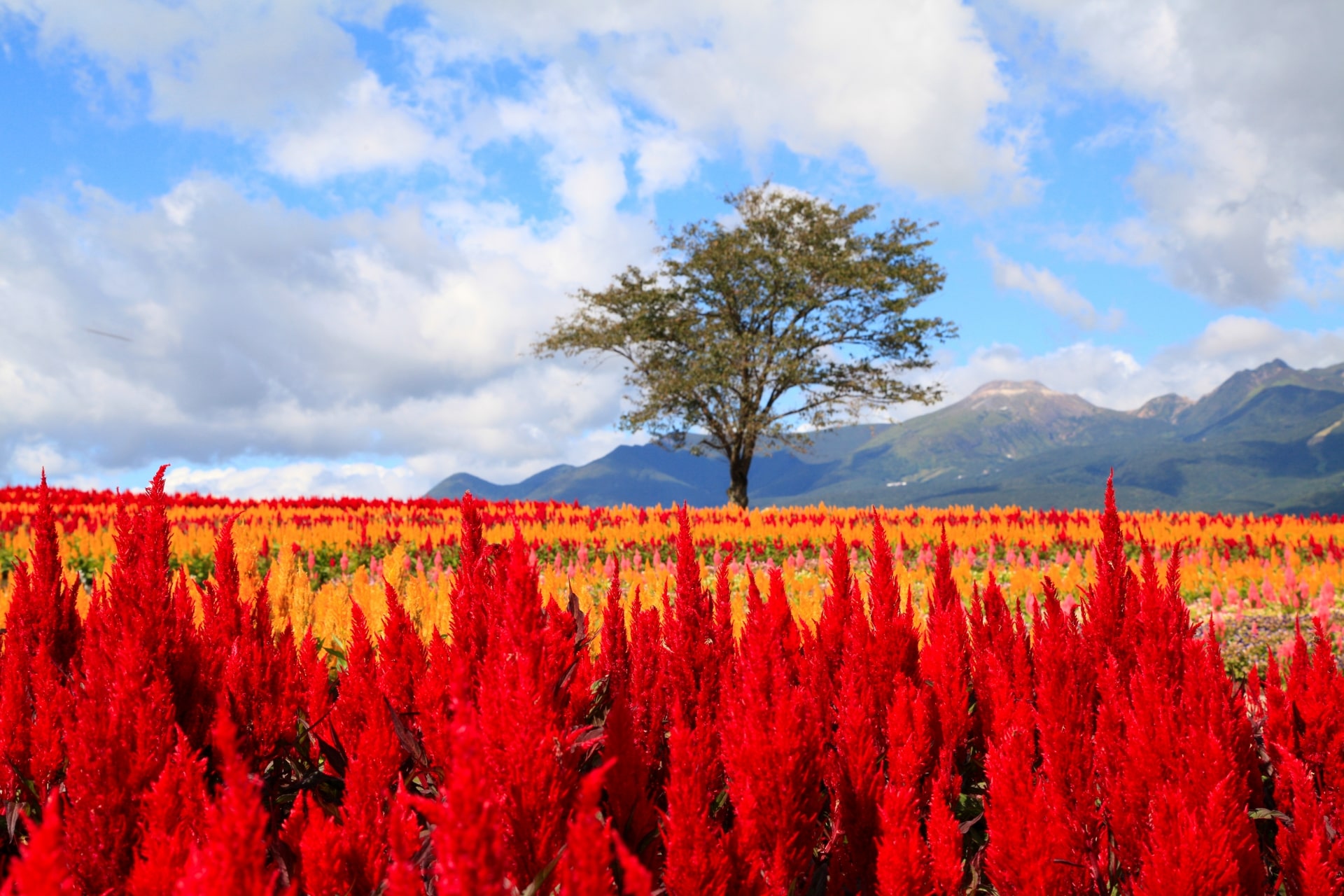
One of its main highlights is the sea of 220,000 tulips that captivate visitors around mid-May. Open from late April to late October, Nasu Flower World offers a picturesque escape to a world where flowers reign supreme, painting the landscape with their endless colors and forms.
 Access Access |
50-min drive from JR Kuroiso Station or Nasushiobara Station |
|---|---|
 Official Website Official Website |
http://www.flower-world.net/nasu-fw-page.htm |
4. Ashikaga Flower Park, Tochigi
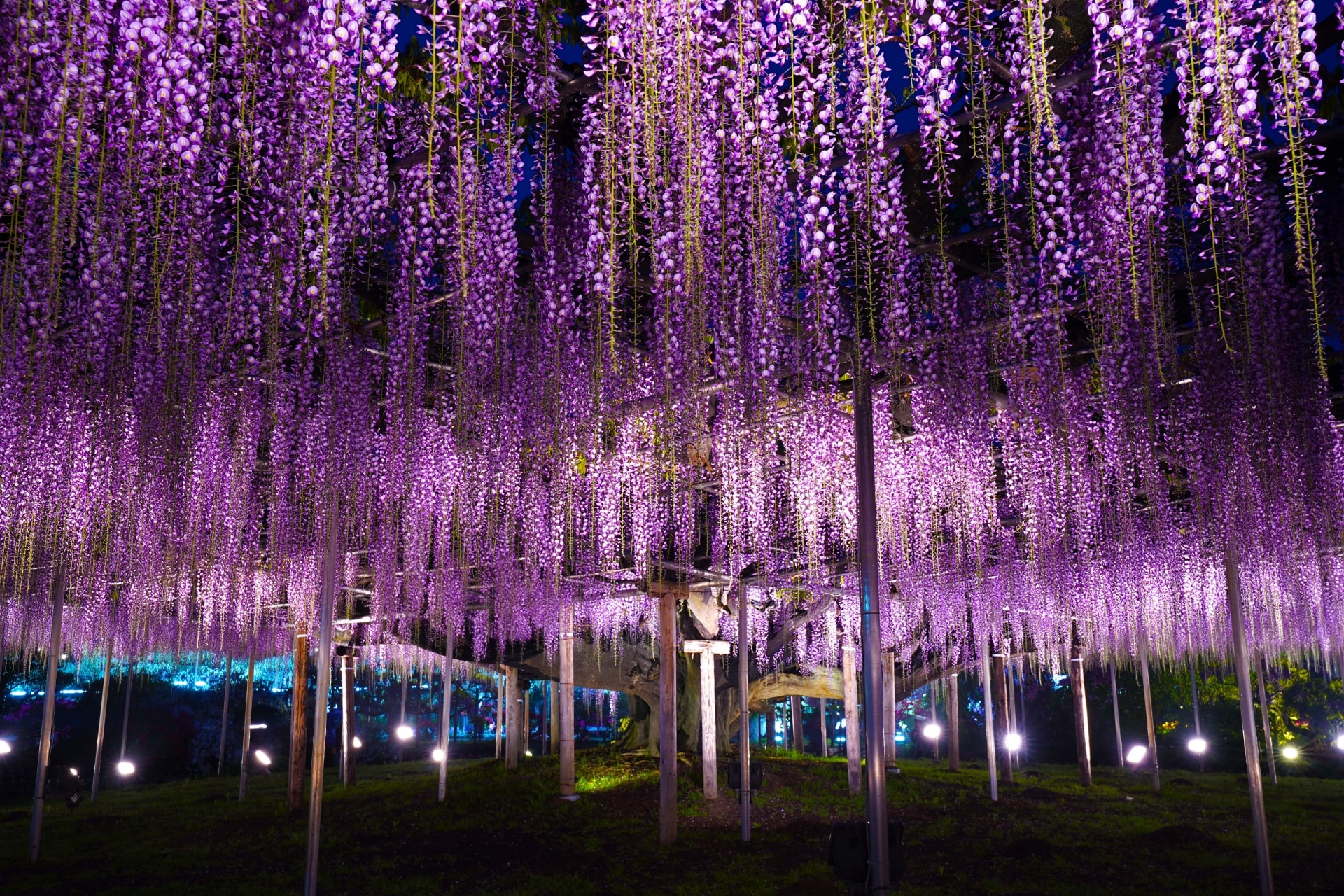
The park’s beauty extends into the night with spectacular illuminations, making it a premier destination for viewing Japan’s most stunning nightscapes. The illuminations are particularly noteworthy during autumn and winter, enchanting visitors from around the globe.
More information: Ashikaga Flower Park Great Wisteria Festival
<<Hitachi Seaside Park and Ashikaga Flower Park day trip from Tokyo!>>
 Access Access |
In front of Ashikaga Flower Park Station |
|---|---|
 Official Website Official Website |
http://www.ashikaga.co.jp/ |
5. Hitachi Seaside Park, Ibaraki
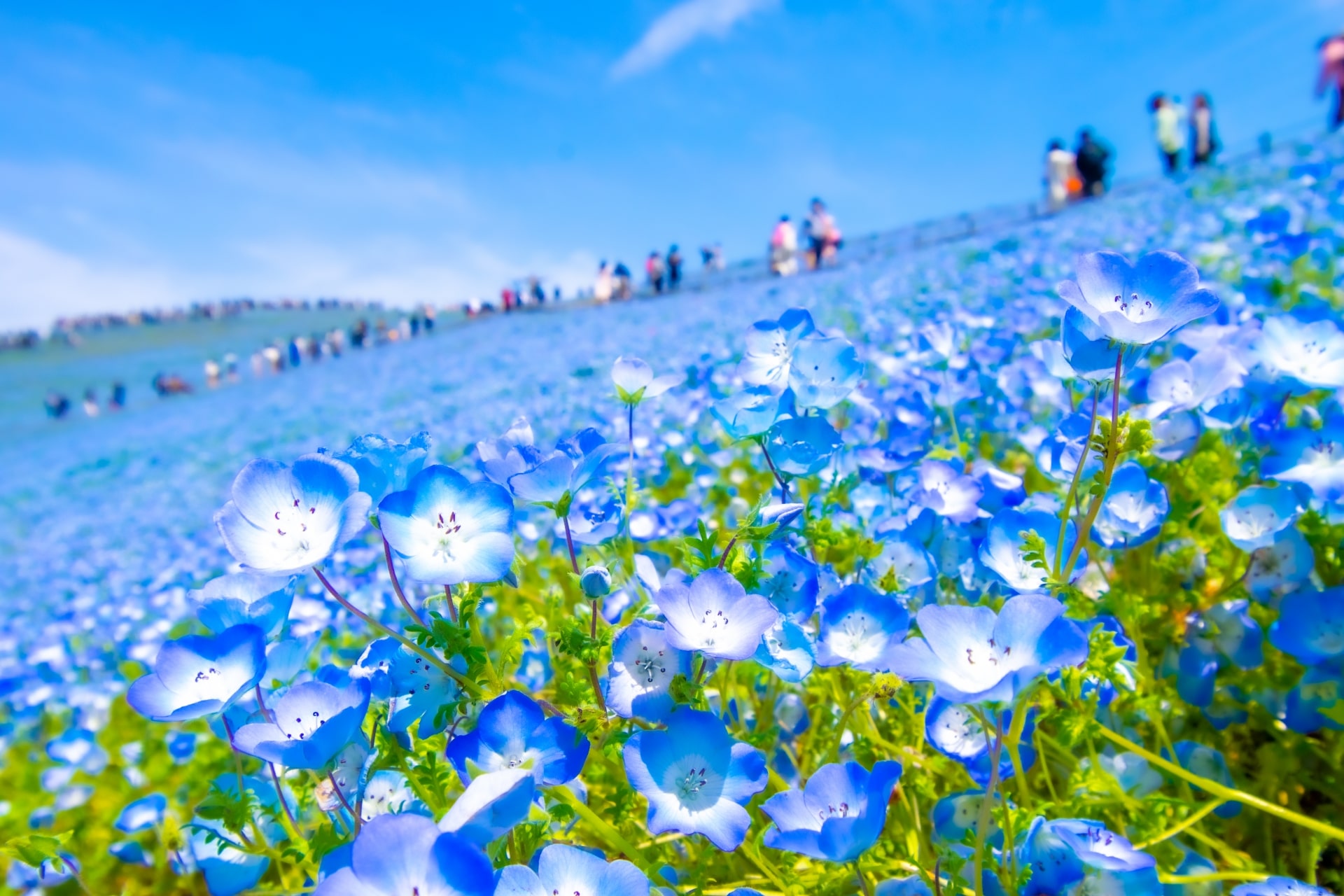
The Nemophila Harmony in spring blankets the Miharashi Hills with over 4.5 million baby blue eyes, creating a surreal contrast against the Pacific Ocean. In autumn, the Kochia Carnival takes center stage as 32,000 kochia bushes set the hills ablaze with their reddish hue, offering a visual spectacle that captivates visitors and photographers alike.
<<Hitachi Seaside Park and Ashikaga Flower Park day trip from Tokyo!>>
6. Showa Memorial Park, Tokyo
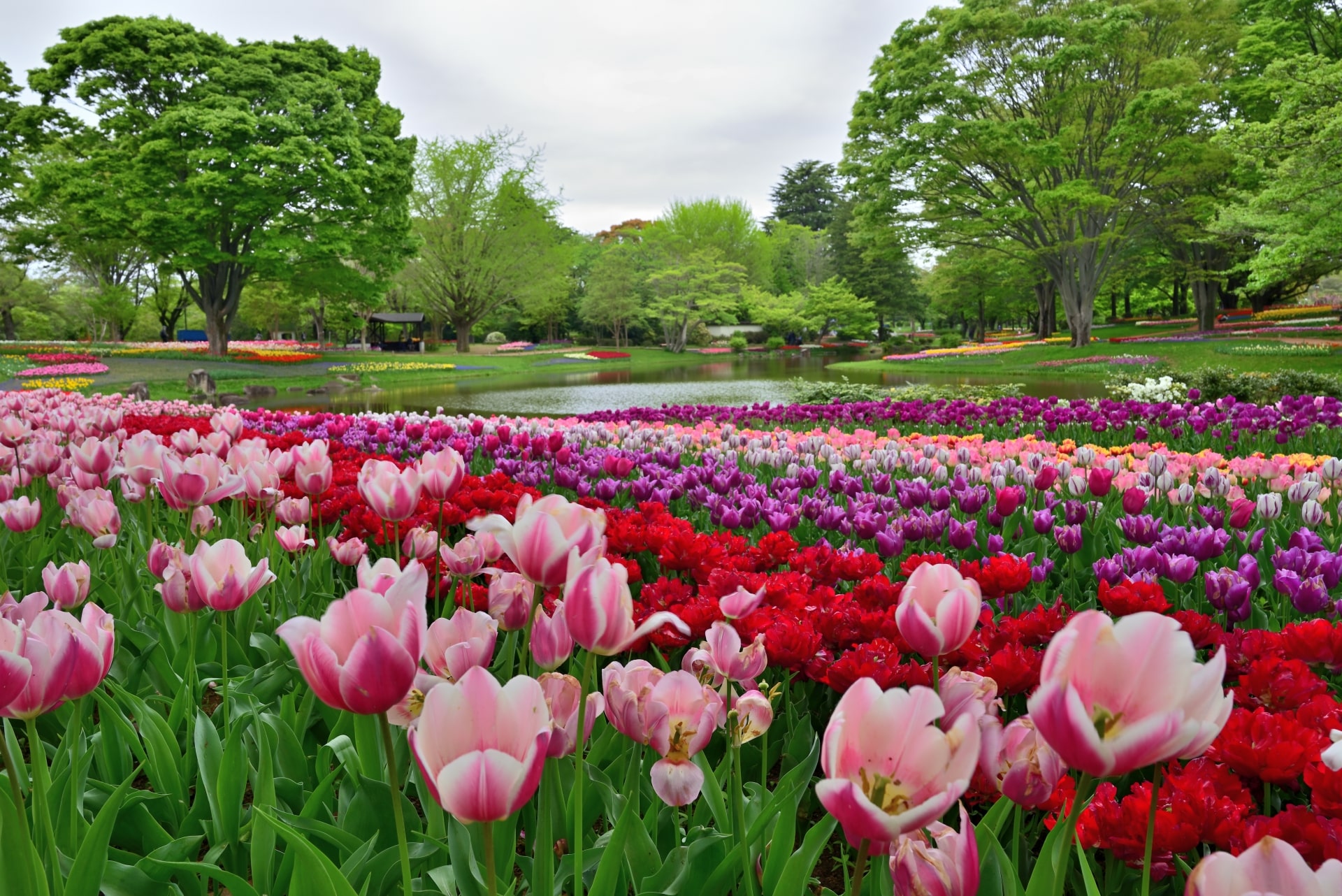
As Tokyo’s largest park, it’s a tranquil oasis for picnics, leisurely strolls, and cultural festivities, including the celebrated spring flower festival and Christmas illuminations. With its rich variety of flora and recreational facilities, this park provides a picturesque setting ideal for nature lovers and families alike.
More info: Showa Memorial Park : Best Flower Park in Tokyo
7. Hana Biyori, Tokyo
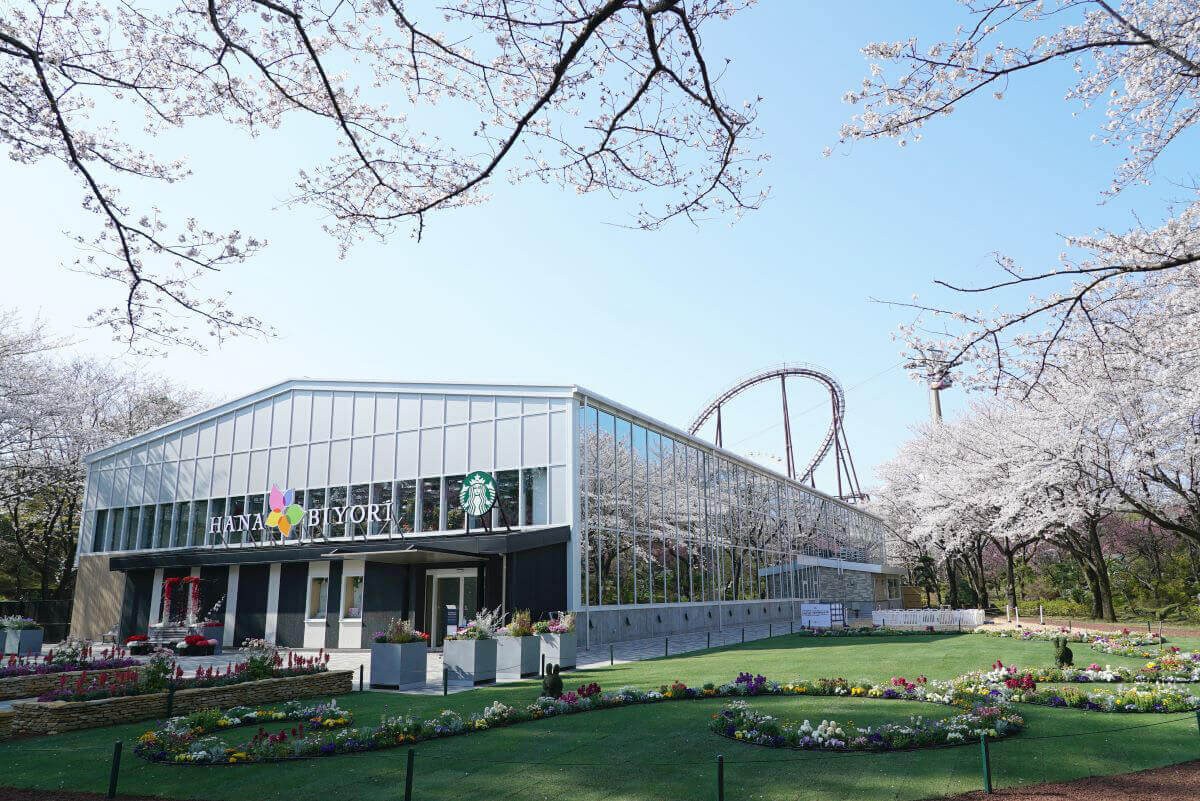
HANA BIYORI (はなびより), within Tokyo’s Yomiuri Land (よみうりランド), is a unique fusion of flora and technology that creates a captivating botanical garden experience. This innovative space boasts Kanto’s largest flower chandeliers within a 1,500 square meter greenhouse and a 20-meter-long flower wall, ensuring a perpetual bloom of diverse flora.
The park also features Japan’s first botanical garden Starbucks, providing a lush environment for enjoying your coffee. Visitors can wander through the Four Season and Sequoia Gardens, home to over 17,000 seasonal flowers, and be enchanted by digital art shows that merge natural beauty with virtual landscapes.
More info: HANA BIYORI: Entertainment Botanical Garden in Yomiuriland
<<Get your Yomiuriland tickets here!>>
 Access Access |
10-mins walk or free shuttle bus from Keio Yomiuri Land Station |
|---|---|
 Official Website Official Website |
https://www.yomiuriland.com/hanabiyori/ |
8. Yamanakako Hananomiyako Park, Yamanashi
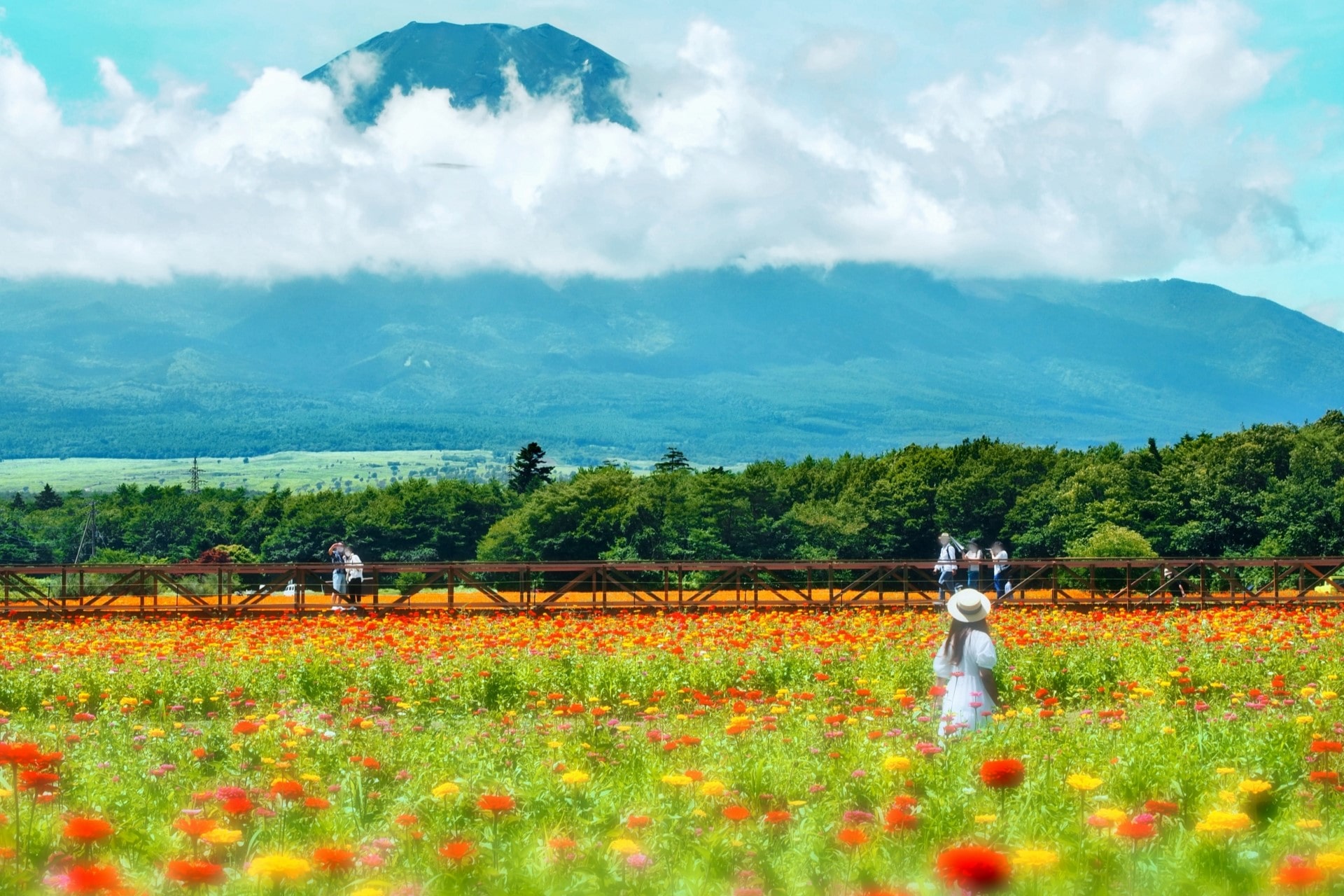
Conveniently situated near Lake Yamanaka and Oshino Hakkai Village, the park is an essential stop for those exploring the Mt. Fuji area. Seasonal flowers like vivid tulips in spring, sunflowers in summer or pink and violet cosmos of early autumn, ensure there’s always a good reason to stop by.
More info: Lake Yamanaka Flower Park: Colourful Flowers next Mt.Fuji
 Access Access |
30-min bus from Mt.Fuji Station |
|---|---|
 Official Website Official Website |
http://www.hananomiyakokouen.jp/ |
9. Nabana no Sato, Mie

Beyond the illuminations, visitors can simply enjoy the beauty of seasonal blooms, including Sakura in spring and hydrangeas in summer. The park also offers a taste of Mie Prefecture’s rich agricultural bounty, with restaurants serving dishes made from locally-grown fruits and vegetables.
More info: Nabana no Sato: Spectacular Winter Illumination
 Access Access |
15-min bus from Nagashima Station |
|---|---|
 Official Website Official Website |
https://www.nagashima-onsen.co.jp/nabana/index.html |
10. Awaji Hanasajiki, Hyogo
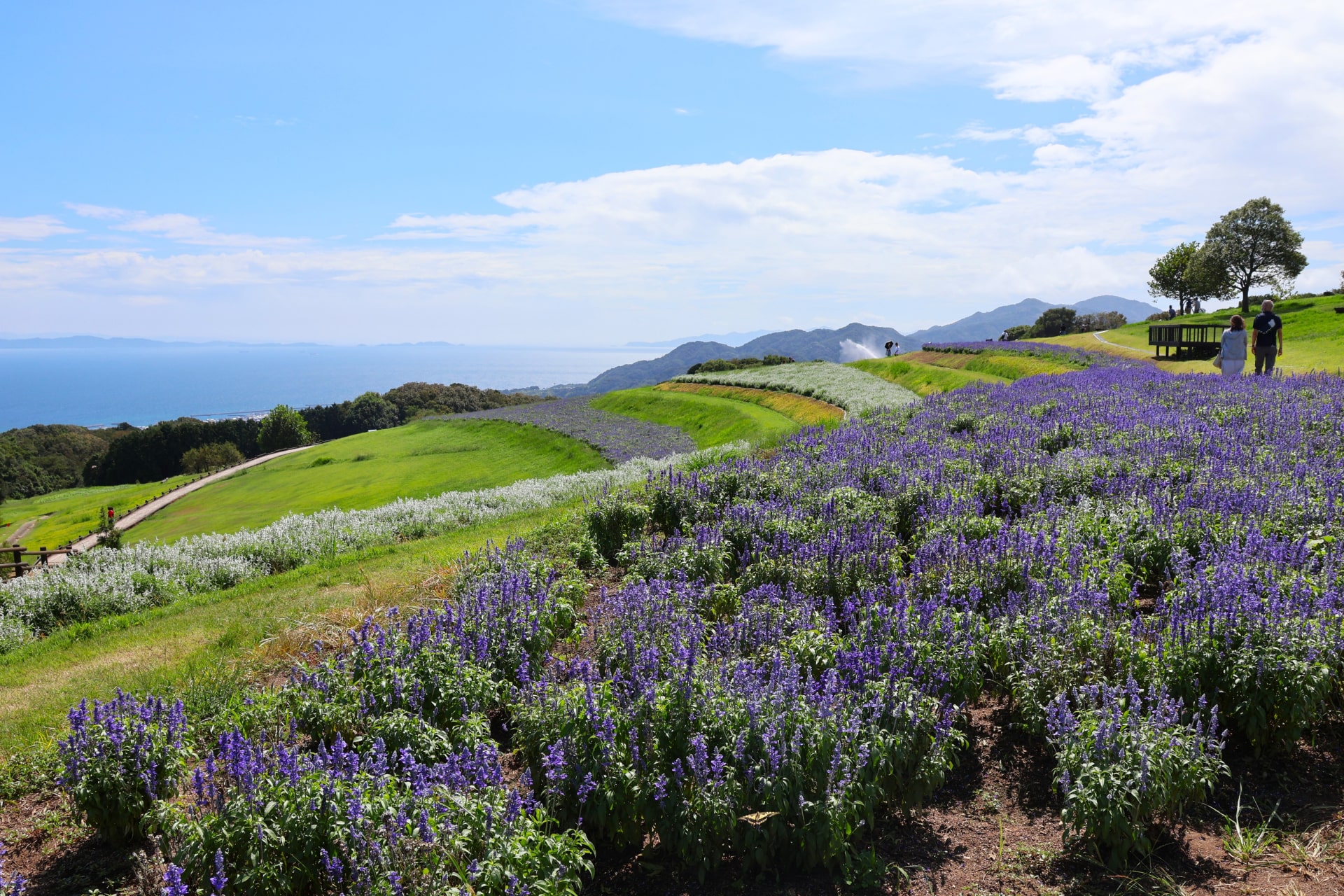
This extensive park not only serves as a peaceful haven for nature enthusiasts and photographers but also hosts various flower festivals and events, enhancing its charm as a must-visit destination on Awaji Island.
11. Uminonakamichi Seaside Park, Fukuoka
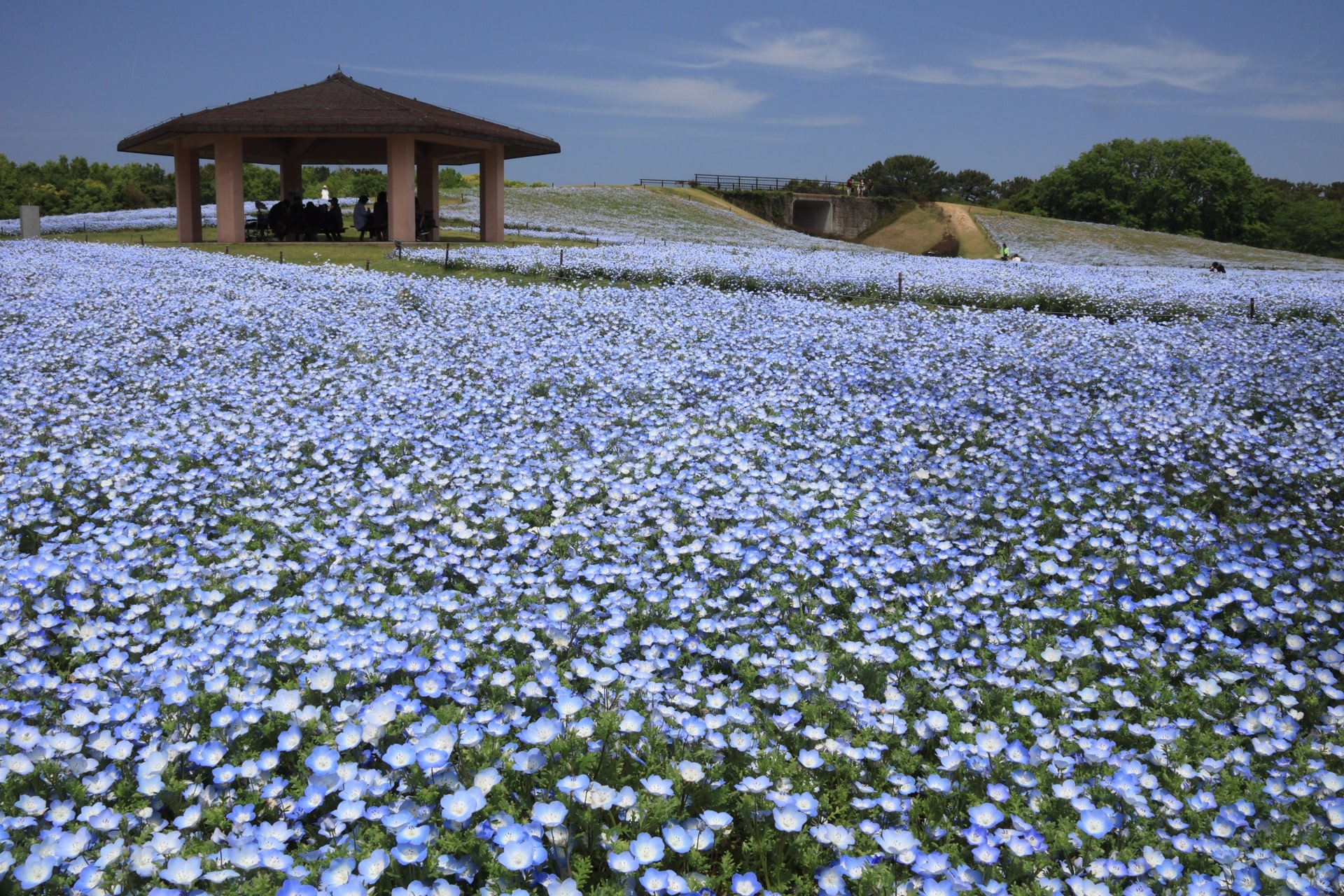
The “Uminonakamichi Flower Picnic” event celebrates spring with crafts, AR stamp rallies, and more, amidst the scenic backdrop of colorful blooms. The park’s versatile offerings ensure that every visitor, whether seeking tranquility among the flowers or adrenaline-pumping activities, finds something to enjoy.
12. Kuju Flower Park, Oita
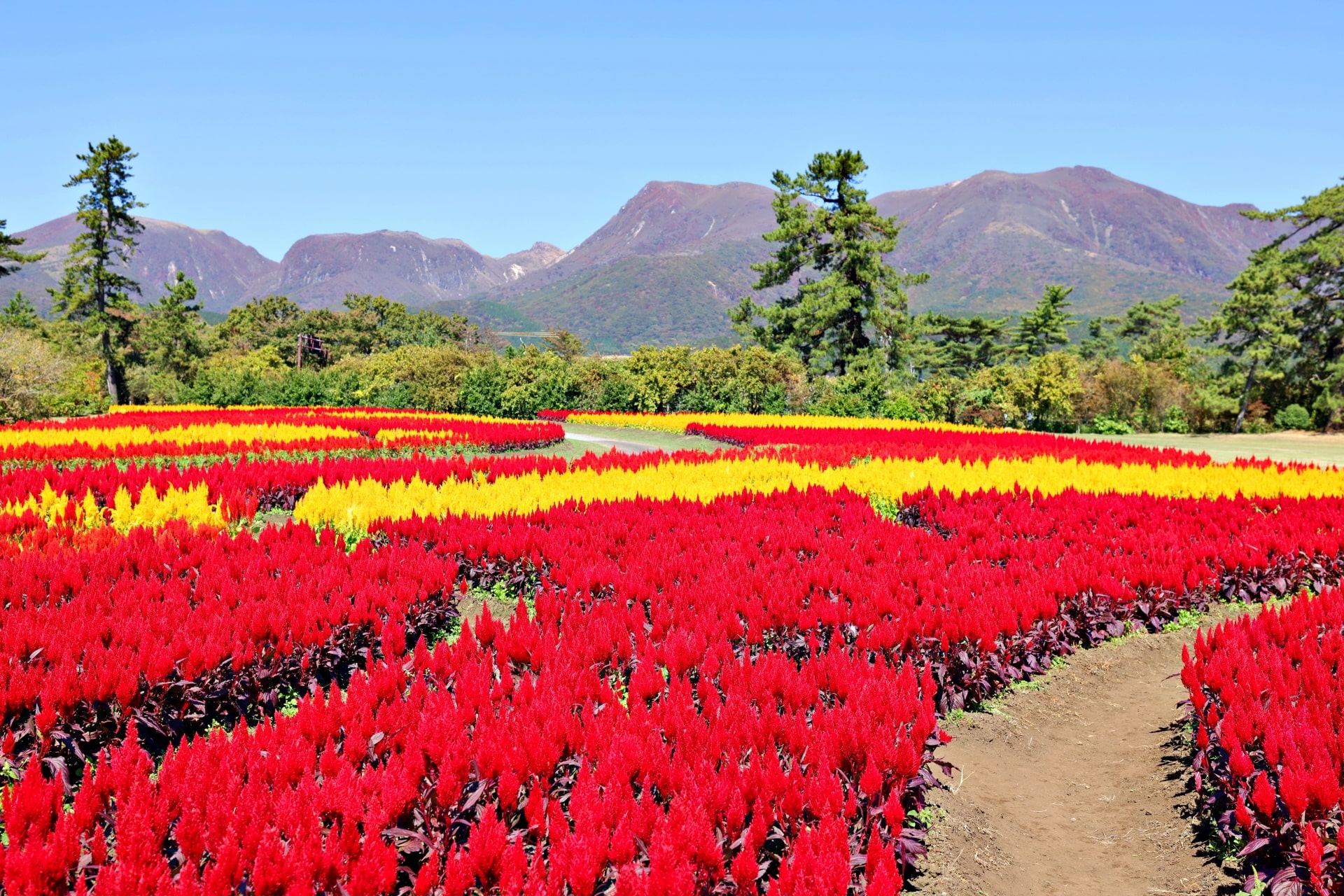
The park also features a greenhouse with tropical plants, enhancing the variety of flora on display. Despite its remote location, making access challenging without a car, Kuju Flower Park remains a beloved stop for those traversing the Trans Kyushu Route, offering a refreshing respite amidst nature’s beauty.
13. Huis Ten Bosch, Nagasaki
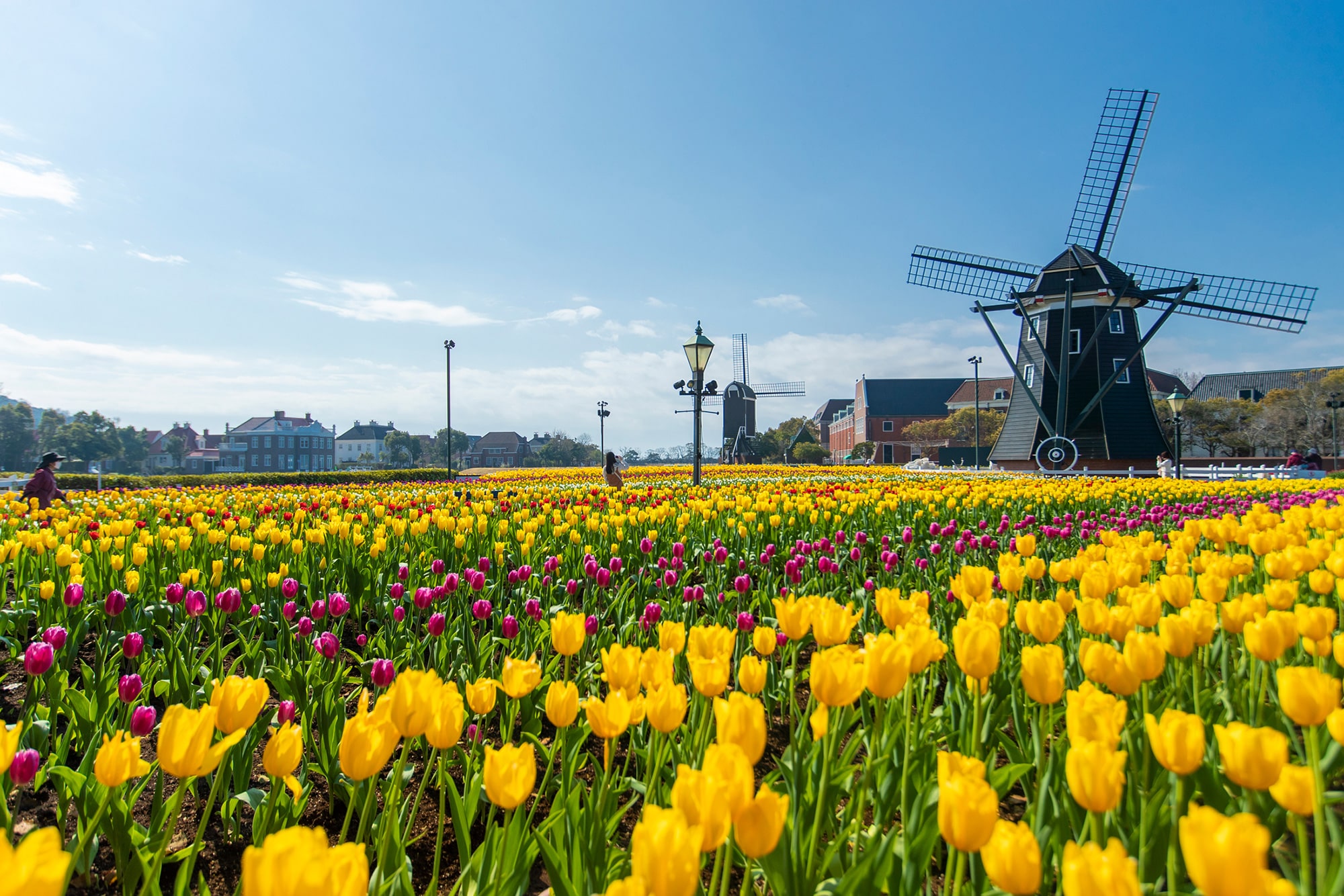
Huis Ten Bosch (ハウステンボス) in Nagasaki is a theme park inspired in a Dutch town, complete with canals, ships, windmills, and European-style buildings. This park, in addition to its architectural charms, offers a range of attractions including amusement rides, seasonal flower fields, and spectacular night illuminations featuring 13 million lights.
The park’s immersive experience is further enhanced by theatres, museums, shops, and restaurants, making it a comprehensive destination for entertainment and leisure. Huis Ten Bosch stands out not only for its thematic style but also for its role as a cultural bridge, attempting to bring a piece of Europe to Japan.
<< Book Nagasaki Huis Ten Bosch Ticket>>
▽Subscribe to our free news magazine!▽
To check the best seasonal blooms in Japan, here is the ultimate guide to flowers in Japan!
For more information about seasonal attractions and traveling in Japan, check these articles below, too!
▽Related Articles▽
▼Editor’s Picks▼
Written by
Photographer, journalist, and avid urban cyclist, making sense of Japan since 2017. I was born in Caracas and lived for 14 years in Barcelona before moving to Tokyo. Currently working towards my goal of visiting every prefecture in Japan, I hope to share with readers the everlasting joy of discovery and the neverending urge to keep exploring.





